Ryan Hall's Blog, page 167
May 17, 2017
40 Races For Her 40th Birthday—And Sponsoring 40 Runners
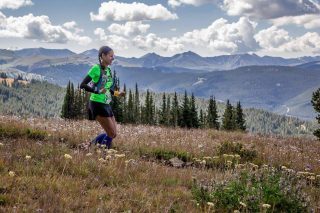
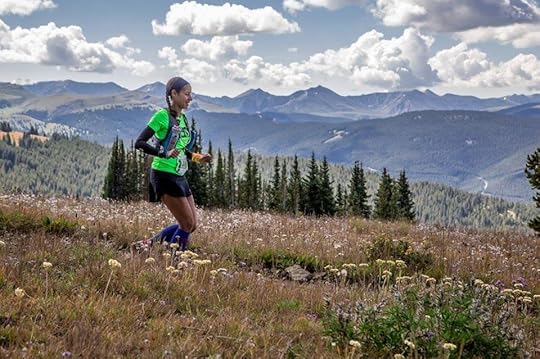
Races and birthdays often go hand-in-hand, at least for runners. Whether it’s a challenging goal race, a favorite event or a run with friends, the energy and camaraderie of race day lends itself to celebration. Plus, races aren’t cheap, making them a nice treat (chafing, blisters and exhaustion included!) for your special day. In honor of her 40th birthday on Aug. 23, Jenna Powers decided to run 40 races throughout the year. But Powers wanted this celebration to be larger than her, and she wanted to help others. That is why the Seattle resident is also sponsoring race entries for 40 other runners.
“Racing has changed my life,” says Powers who turned to running when going through a divorce just before she turned 30. “Anyone can run any distance because all you need is a pair of sneakers. But racing can be expensive. I want people to know what it feels like to stand on a start line and cross a finish line.”
On top of Powers’ self challenge to run 40 races this year, this is also the third year she is participating in the Run The Year challenge sponsored by Run the Edge, meaning she plans to run at least 2,017 miles as well. She posted a message on the program’s Facebook page to offer the free race entries. So far, the 39-year-old has sponsored 20 runners. To apply, people send their stories to Powers. She then chooses those that are most compelling to her and registers the entrants for their race. While she isn’t personally meeting the entry recipients, she does ask them for race photos to share on her blog.
Powers is more than halfway through her own 40-race goal after recently finishing Badwater Salton Sea. She claims her goal feels aggressive in a good way.
“Since 2014, when I ran my first marathon, I feel as though my life really changed for the better,” says Powers, who works for Amazon. “I did a 100-miler last year, and wondered what could I possibly do that’s bigger. Forty races seemed pretty significant and daunting since I have to race pretty much every weekend.”
RELATED: 6 Everyday Runners’ Secrets To Survival And Success
Powers travels frequently for work. She already had some events on her calendar, meaning scheduling races to meet her goal has taken thoughtful planning. She kicked the year off by running the four-race Dopey Challenge at Walt Disney World with some friends. A long-term dream is to run Western States Endurance Run, so she ran the Black Canyon 100K as a qualifier. Convenience is also a factor. When a business trip took her to Dubai, she was able to run the Dubai Marathon. A trip to Europe coincided with the Manchester 50K in England.
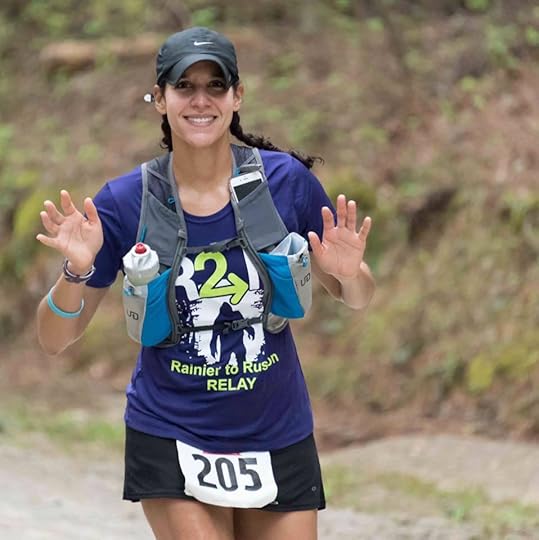
The Badwater Salton Sea was the last big event on her calendar. Now that it’s over, Powers is cutting back to three races per month, instead of five. She’s also filling out the rest of her race calendar for the year. Race 40 will be the Runner’s World Half Marathon in October. Powers says that several of her girl friends are running with her. Her mom is even running the 5K. Her husband, who isn’t a runner, cheers from home.
“He is very proud of me, but thinks I’m nuts,” says Powers. “He was there for my first marathon and my first 100-miler.”
A challenge with running any race, much less 40 of them, is managing training and recovery. Powers has been in marathon training mode for the past three years, so she is used to the miles and has a solid base. For this challenge, she works races into her training plan. She is forcing herself to look at every race as a training run and admits PR’s aren’t the goal (although her current marathon PR is 4:13), at least for this year.
RELATED: How Fitness Personality Robin Arzon Empowers Others To Run
Powers works with a trainer twice a week for weight sessions. Otherwise, she does all of her training on her own and is good about listening to her body and adapting when necessary. She runs six days per week, usually in the morning, averaging 40 to 50 miles weekly. Stretching and massaging are not a part of Power’s training plan, but she does make it to yoga about once a month. Given her solo training style, Powers thinks that being with other people may be one of the reasons she enjoys racing so much.
Powers is already planning her future goals and has some big ideas in mind. Running the Western States Endurance Run and qualifying for the Boston Marathon are at the top of her list.
“Qualifying for Boston is a big, crazy goal. But I’m putting in the miles and getting faster.”
The post 40 Races For Her 40th Birthday—And Sponsoring 40 Runners appeared first on Competitor.com.
The Many Layers Of Ultrarunning Star Anton Krupicka
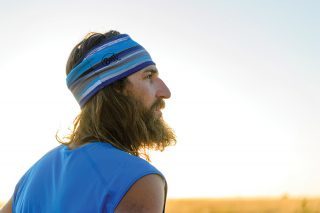
Anton Krupica, BOUlder, CO
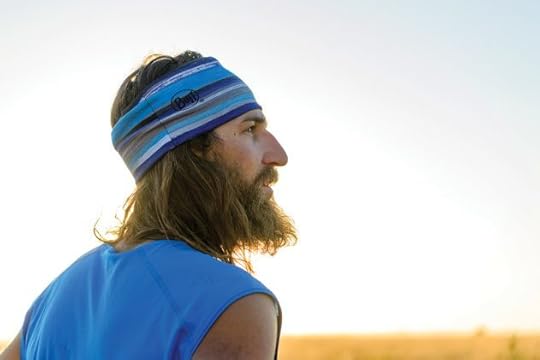
It’s early fall, and Anton Krupicka easily scrambles up a 5.9 top-rope climb in Crested Butte’s Taylor River Canyon. Earlier that day, he hesitantly—because of a stubborn illiotibial band injury—joined a 9-mile group trail run with staff from his main sponsor, La Sportiva, and a handful of media folks. “It hurts,” he says of his knee as he chalks up for another route. Then, a bright side: “But I get the same flow from climbing and skiing as I do from running.”
Krupicka has been a prominent figure in the ultrarunning scene since winning Colorado’s high-altitude Leadville Trail 100-mile race in 2006 as a relative unknown. He won it again in 2007, and enjoyed a series of race wins in his first few seasons, picking up major sponsorship deals and becoming somewhat of a poster boy for ultrarunning as the sport gained momentum. His penchant for running longhaired, bearded and shirtless in minimalist shoes had a sea of ultrarunning fans referring to him as “Jesus-man” for a decade; likewise, but inadvertently, he’s amassed a cult following.
Due to a string of injuries, most notably a broken fibula in 2011, this resident of Boulder, Colo., hasn’t raced the past few years, and he runs just one or two days a week. That doesn’t mean he’s disappeared from the ultrarunning scene. In fact, Krupicka has more sponsorship deals and followers on social media than ever—something that befuddles him.
Who is Anton Krupicka now, at least to the running world? Why is he still so popular? He can’t answer the question. And he’s uncomfortable trying.
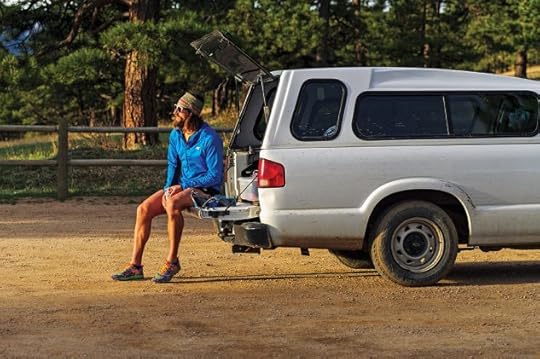
As a 10-year-old fifth grader in Niobrara, Neb., Krupicka won the Presidential Physical Fitness Test Mile Run. “That’s how I started running,” he says. “You’re just trying to figure out where you fit in, who you can impress, how you can feel cool with your peers. And running was just something I was good at.”
In the month leading up to the same test in sixth grade, he ran a mile—and tried to break six minutes for the distance— every single day. During the test, he posted another winning time (5:55).
At age 12, he ran a marathon in 3:50:11. “Oh dude, I was psycho when I was 12,” he says. “I was way more psycho about all that than I am now. I was counting calories. I remember doing fasts. I was reading all this 1970s running literature that I picked up at Goodwill, and fasting was sort of this cutting-edge thing. I was like, ‘I’ll give that a shot.’”
Krupicka continued to read, and to run, and to sometimes apply what he’d read to his running throughout high school and college. Long before the barefoot running boom, Krupicka read threads about it on Letsrun.com, along with a 1970s National Geographic article on the Tarahumara Indians that inspired him to start toying with running minimalist, and sometimes, shoeless. In the summer of 2005, he says he logged 200-mile weeks in the Puma Harambee—“basically a cross country spike without the spikes,” he says. He ran two hours before work and two hours after, explaining how running four hours a day was fairly standard for him.
With all those summer miles under his belt, and with who he’s become, one would think Krupicka would have been a standout collegiate cross-country runner. Not so. He was what he calls a “mediocre” collegiate runner at Colorado College, constantly disappointed with his race results. (Today, he says he realizes his body—and his running—operates cyclically, and he takes a number of weeks completely off every fall.)
VIDEO: Why I Run—Anton Krupicka
“By October I was worthless,” he says. “Fall is always my lowest time of the year. It made it super frustrating. I trained so much, I was so passionate about it, but never had success.”
That all changed after college, when Krupicka set his focus on the mountains and trained with a vengeance for the Leadville Trail 100. His racing season shifted to summer, and success followed.
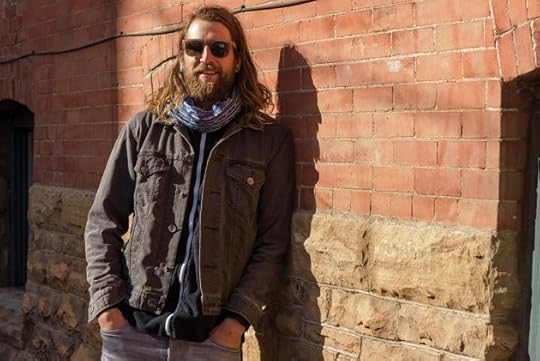
The summer of 2006, he won the Leadville Trail Marathon in early July. He won the Leadville Trail 100 in August, running the second-fastest time ever logged on the course at the time (17:01:56). Two weeks later, he set his road marathon PR (2:42; he later found out that he had mono).
Photos of Krupicka running shirtless despite storm clouds on top of 12,508-foot Hope Pass en route to winning Leadville garnered media attention for the then-22-year-old. “There was an inversion,” he defends, of running shirtless. “It’s a comfort thing. People were just taken aback, for some reason.” While most ultrarunners carry packs over wicking layers, Krupicka’s bare torso made him look like he was out for a quick 5-miler.
Following the photo—and a story in Trail Runner Magazine—the image of Anton Krupicka, the nature-boy-runner, started to grow. When, in 2009, Chris McDougall’s book Born to Run came out, the minimal footwear movement was in full swing, and it needed a face. Here was this young, lean guy running in tiny New Balance shorts and zero-drop shoes winning races. By 2009, he’d won a number of prestigious ultramarathons, including Leadville (twice), the Rocky Raccoon 100, the Collegiate Peaks, American River, Zane Grey and White River 50-Milers, plus a number of other races, all before turning 26.
What training formula was he using to gain so much success, so young? Krupicka double-majored in philosophy and physics in college, a duality that plays out in his running and training. He, more so than most runners, seems to apply a combination of the right and left sides of his brain to his sport.
RELATED: Anton Krupicka On Living And Training In Leadville
He’ll run for hours in the mountains without much at all, preferring simplicity on the trail. On runs shorter than four hours, he’d deprive his body of fuel and fluids, but eat two to three gels an hour and hydrate sufficiently on race day. “The idea is,” he says, “A, it just sucks to carry shit. B, you’re training your mind and your body to survive on less. Then when you get to a race it feels easy, you feel great, because you’re actually fueling yourself. It’s a premeditated thing.” He says that while training, he “bonks all the time,” but when he adequately hydrates and fuels during a race, his body responds. It’s what he calls “a caveman approach to running and training.” But it’s worked.
And though people may think of Krupicka as a free-spirited hippie loping around on mountain trails, he’s always meticulously logged everything from how many times he’s summited different peaks, to how much vertical he’s gained, to keeping a standard training log. “I like that kind of stuff,” he says. “I have spreadsheets of all kinds of different shit that I update daily.” He says he logs everything, in terms of what he does in the mountains, “because that’s what’s important” to him.
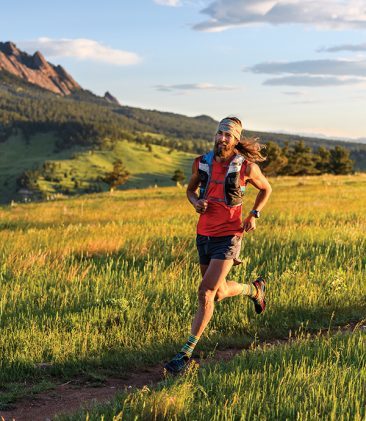
Since 2007, he’s blogged about his running (on a blog he titled “Riding the Wind”), and other topics that matter to him: music, literature and science as they apply to sport. His blog became popular reading for ultrarunning fans.
But while his racing success and image grew, so did his discomfort with having all eyes on him. Krupicka was the first-ever interview on iRunFar.com, a website dedicated to the sport of ultrarunning, when it launched six years ago.
“That’s when I started getting cynical about it,” he says. “I still harbor this … not feeling deserving or worthy of attention. A big part of it comes from spending most of my life not having success as a runner. Now I’ve come to terms with that.”
But he struggles with not having won races in years—despite finishing sixth at the 2015 Transgrancanaria 125K. “On a near-daily basis, I get invites to races around the world. I don’t even race. I can’t even run. It’s frustrating.”
Like most runners, Krupicka’s relationship with running has evolved over the years.
As a guy who loves moving in the mountains, he wasn’t about to give up being an athlete when he broke his fibula—or when he suffered a stress fracture in his shin in 2015, or because of his most recent running hindrance, IT Band Syndrome (which he says skiing this past winter has helped improve).
Krupicka dabbled in rock climbing in college (and did a year of post-graduate work in geology). When his injured leg kept him off the trails in 2011, he took to the rocks, climbing Boulder’s Flatirons and routes in Eldorado Canyon with other runner/climbers. Once healthy again to run, he continued to climb, and started doing challenging link-ups that combined the two—running and climbing for speed records, joining an underground group called Satan’s Minions.
RELATED: Anton Krupicka—Mountain Man, Trail Champion, Running Icon
When the stress fracture of 2015 hindered his ability to run once again, Krupicka discovered road biking—and the power that music has on him. Although he doesn’t listen to music while running, he tunes in to podcasts and music while on the bike and while skiing. What comes through his earbuds sometimes makes him emotional, which he says has been happening the last few years. “I’ll be listening to a certain song,” he explains. “And I’ll be like, ‘Holy shit, this is wild!’” He explains that tears will be streaming down his face, mid-ride. His explanation? “I don’t know!” he says, laughing. “With physical activity, somehow the emotions are closer to the surface.”
This is Anton. There’s more to him than winning races.
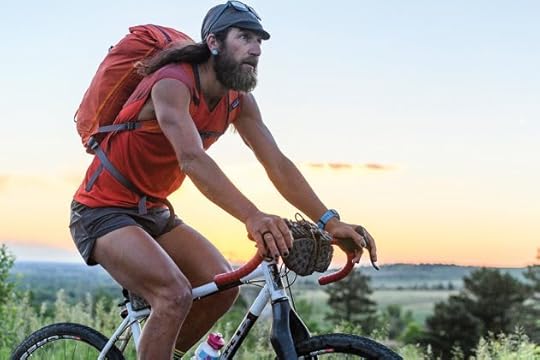
Just as Krupicka has been a favorite topic of varying media trends since his running career started, with magazine and web profile stories, his own blog followers, and social media fans, the influx of documentary-style trail running films have loved Anton, the topic, too. In the High Country (2012) captured his evolution and affinity for running, climbing and being in the mountains. Unbreakable (2011) followed the epic race between Krupicka, Kilian Jornet and Geoff Roes during the Western States 100 (Krupicka finished second). The Ingenious Choice (2014) followed Krupicka during the Ultra Trail du Mont Blanc, with a narration throughout quoting Henry David Thoreau.
The media—and his fans—are inspired and intrigued by the guy who not only runs, but climbs, skis in the backcountry and rides his bike. He’s gotten attention in ClimbingMagazine for his recent record of what’s known as the Long’s Peak Triathlon (riding 38 miles on a bike to a trailhead, running 5 miles to the base of a climb, and climbing the 1,700- foot route on the 14,259-foot Long’s Peak before running 9 miles down and returning to the start point in Boulder via another 38-mile bike ride, all in just over nine hours).
“Literally, within a week to 10 days of starting a new activity, like climbing or skiing or biking, I was all in,” he says of his new hobbies, of which he’s quickly excelled. “I was psyched.” He continues to say that if he became 100 percent healthy tomorrow and never had a running injury again, he’d still only run four or five days a week, “just because there’s all this other shit I want to be doing still, you know?”
In December, Krupicka traveled to Patagonia with National Geographic Adventurer of the Year Colin Haley to climb peaks in the Fitzroy Massif round-trip in a day, something that’s gotten even more attention.
Still, he wrestles with it.

“I can’t help feeling like what I do is unimportant,” he says. “There are people in the world who have noble jobs and jobs that are for other people and not just for themselves. I feel like being a sponsored athlete is such a ridiculous life to lead. It’s like, what are you doing for people? Nothing.”
He talks about how posing for photos with fans can make him feel uncomfortable and even alienated, but the fact that he’s inspiring people gives him a “micro-speck of solace,” because he says he often gets inspired by other athletes—and musicians— and appreciates that kind of inspiration. But he’s unsettled with the image he feels people are projecting on him. “You know, this shirtless, minimalist dude … whatever they’ve come up with. So you just feel like no one ever gets you, ever.” Yet, he admits, “That’s, like, such a celebrity bullshit thing to whine about it.”
Krupicka sees himself as someone who loves to move in the mountains, as a runner, skier, climber, cyclist. And as a guy who loves music and literature, physics and philosophy. Someone who happens to run shirtless sometimes and who’s had successes as an ultrarunner, a few years ago. And as someone who’s not taking his lifestyle as a fully sponsored athlete for granted, despite feeling conflicted about it. And he’s grateful to be sponsored by a multisport company, La Sportiva, which makes gear for trail running, climbing and skiing.
This summer, he’s hoping his IT Band is healthy enough to race the Ultra Trail du Mont Blanc, a 103-mile race through the Alps. Beyond that, he has a list of four different remote, classic, technical alpine ridge traverses planned, one each in the Teton, Wind River, Eastern Sierra, and North Cascade mountain ranges, which will have him climbing a lot in preparation through the spring and early summer.
“All this stuff that I do outside of running, it’s no different from running,” he says. “It’s all the same in my attitude and sentiment toward it. I’m just trying to live fully, you know? Authentically.”
The post The Many Layers Of Ultrarunning Star Anton Krupicka appeared first on Competitor.com.
May 16, 2017
This Is The Right Way To Recover From A Marathon

Similar to training, recovery from the marathon is as much an art form as it is science. Our unique physiologies determine how we each will recover post marathon. Different race day scenarios also play a part.
The three primary physiological components to recovery are muscular regeneration, glycogen replenishment and electrolyte replacement. Some of us suffer more muscular damage due to the course profile, while others become significantly electrolyte deficient caused by tough conditions. Quite simply, the marathon is unlike any other race (even ultra-distance races, with consistent fueling and slower paces) when it comes to recovery. Consider the three scenarios below and best practices for recovery for each.
A moderate-level training effort marathon
Many athletes like to use the marathon as a more moderate effort and a glorified long run. For others, a moderate effort is all that is desired or attainable. In this instance, consider taking two to three days off . The next seven days should include only easy recovery running every other day. A few days of cross-training that first week post-marathon is a good idea as well to ensure the legs are not taking too much extra pounding. The second week can include one light uptempo session and a long run that is half the distance of your max long run. By the third week you should be able to return to 75 percent of your normal training volume.
RELATED: The 3 Stages of Proper Marathon Recovery
A hard race day effort marathon
This type of marathon effort requires the most recovery. You are pushing your body to the next level of exhaustion. It takes time for the body to rebuild the damaged muscle tissue, replenish the depleted glycogen stores and replace lost electrolytes. The soreness and stiff ness will subside quickly over the first week, but the underlying glycogen and electrolyte depletion take longer. This cannot be rushed or you will suffer substandard training and racing in the future and risk overtraining syndrome.
Begin with two weeks off from running. You can include some very light, non-impact cross-training. After two weeks, run every other day for one week, followed by 30 percent of your peak volume the fourth week. This should all be easy running until roughly five weeks post marathon, where you can start to include some controlled moderate effort workouts. The mileage buildup can increase by 20–30 percent each week thereafter.
A significant marathon effort with another target race soon
For some athletes, the marathon is not their sole focus. I have worked with many athletes who work toward a marathon goal while at the same time have another race four to six weeks after the marathon they are interested in doing well in. This scenario is the trickiest and requires a blended approach of some time off , some cross-training and some running. You can only rush the recovery process so much, but you can accomplish both goals if approached correctly.
RELATED: Are You Making These Marathon Training Mistakes?
In this instance, where a harder marathon was completed but not necessarily one that left you completely wiped out, the recovery should still begin with one week off from running. This week should include very good meal planning, a massage and some easy cross-training. Try easy spinning for two of those days for 30–45 minutes, with low resistance and a good cadence. The second week can include running easy every other day and cross-training on the opposing days. All effort should be comfortable, and total mileage should be 30 percent of max volume. The third week can include one half marathon type effort, and running 55–65 percent of max volume. The goal is to allow the body to replenish while at the same time conditioning your aerobic system just enough to keep your cardiovascular system engaged. Two or three harder workouts are all that’s required to maintain the same aerobic fitness level, and max volume is not necessary. Remember: The legs still have to recover, so having them feel good is the goal—even if that requires running less than you would traditionally in the buildup to a race.
Two-time U.S. Olympian Alan Culpepper won national titles from the 5K to the marathon. His first book, Run Like a Champion, is available at velopress.com.
The post This Is The Right Way To Recover From A Marathon appeared first on Competitor.com.
May 12, 2017
This Teen Ran A Speedy Half Marathon In Crocs
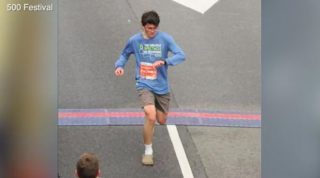
Photo: Fox59
Benjamin Pachev, an 18-year-old runner from Utah, finished 16th at last Sunday’s 500 Festival Mini-Marathon in Indianapolis, running the half marathon in 1:11:53. What makes that finish notable is his choice of footwear. He ran the entire race, as well as all of this training, in Crocs.
His father, Alexander Pachev, also ran the half marathon, finishing in 1:16:07. Just like his son, he also wore Crocs.
In an era of customizable kicks and shoes designed to break world records, it is unusual to see such speedy runners wearing footwear not designed for running. However, for Benjamin and his father, their decision came down to cost.
Benjamin is one of 10 children in the Pachev family. Alexander told Fox59 that running shoes for his entire family would be too expensive, but he found Crocs to be affordable and durable for running. The family claims that the shoes can last for about 2,000 miles.
For now, it seems that Benjamin doesn’t mind the choice of footwear. He told Fox59 that running in Crocs was “…like having a little fan that’s just streaming air over your foot.”
Related: Finishing A Race Under Your Own Power
The post This Teen Ran A Speedy Half Marathon In Crocs appeared first on Competitor.com.
May 11, 2017
In Motherhood and Running, Expectations Rarely Match Reality

When my son Lucas turned one late last year, I realized there was one major lesson I had learned: my expectations for motherhood rarely matched reality. My tense, planned, perfectionist personality was often at odds with the unpredictability of life with a child. Allowing myself a lot of flexibility and a little grace when things don’t go as planned has always been a lifelong challenge.
Before I was a mother, these all-or-nothing tendencies were present in my attitude toward running. A missed workout caused despair. If my training cycle fell short of perfection, I wouldn’t run the race. This behavior resulted in a string of DNS’s and eventually, a hatred of running.
As a result, I didn’t log much mileage prior to Lucas’s birth or during his first year of life. Exercise only exacerbated the severe morning sickness I felt for much of my pregnancy. Once he was born, my enthusiasm to run returned, but not necessarily the desire to train. My motivation mostly rested on fitting into the closet full of clothing I abandoned in the pursuit of motherhood.
The intensity I committed to running instead became focused on becoming the ideal mother. Lucas was the perfect child, but I constantly found myself to be lacking. I would fight sleep each night to go over all of the ways I had failed as a parent that day. I would wrestle with how to incorporate details from my former childless-life into this new identity. Any goals solely for myself were deemed selfish and did not fit into a life I had centered on my son. For the first months of my son’s life, I didn’t understand that the expectations I put on myself were making me miserable.
RELATED: Mother’s Day Gifts For The Running Mom In Your Life
During this time, I signed up for three half marathons, two of which I never bothered to train for. I blamed time management and adjusting to life with a child. But the truth was that I was too fragile to put my heart into another challenge that I could fail.
I had expected the first two races to go terribly. However the lack of time pressure resulted in two very enjoyable race experiences. I smiled, high-fived volunteers, ran faster than I thought I could, and realized just how much I missed having an outlet for myself. For my third half marathon, I decided to actually train. My husband and family pushed me to set a goal, my former coach agreed to write workouts, and my running buddies were waiting for me, as if I had never left.
In an effort to change my past ways, I tried to set realistic expectations for myself. There would be missed workouts or even missed weeks. Runs may not go as planned. Mileage would not be high. And indeed, all of that came true. But I didn’t dwell. With each setback, I moved on and tried again. With each little success, I allowed myself to feel proud. I tried my hardest not to play a comparison game with others, knowing nothing good could come of it. A newfound confidence emerged in both my running and my parenting. I wasn’t perfect, but I was much happier.
Because of my rediscovered love for running, I envisioned my third half marathon after pregnancy as a race in which I would enjoy every moment, crossing the finish line with a smile on my face. When it came to race day, though, this didn’t happen. An aggressive early pace did not pair well with a hot morning. My legs and spirit faded fast over the last three miles. I crossed the finish line 5 minutes faster than my previous race, but felt absolutely crushed. For some reason, the time on the clock didn’t matter because, in my mind, I had failed to execute my race perfectly.
RELATED: 6 Time Saving Tips For Busy Runners
I know how silly that sounds. Just as silly as spending every night questioning my worth as a mother. But in running and parenting, we are our own harshest critics. In both pursuits, it isn’t easy to accept that we don’t have complete control, despite how much time and effort we put forth.
I’m a work in progress—as a runner, a mother, a person. I love being Lucas’s mom more than anything in the world. Running may not be my top priority, but now I look forward to it everyday. Despite the expectations I put on myself, the reality is that I can’t be the perfect mom or runner. I’m much happier being present in the moment—or mile—I’m in.
RELATED: Meet The Women Who Started The Mother Runner Movement
The post In Motherhood and Running, Expectations Rarely Match Reality appeared first on Competitor.com.
Finishing A Race Under Your Own Power
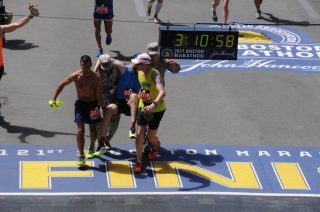
Mike Korfhage and three other men, helped carry Jake Mogan the last 250 meters across the finish line at the 2017 Boston Marathon. Photo: MarathonFoto.com
Runners assisting others across a finish line make for a nice moment, but are they breaking the rules?
It was the photo seen “around the world”: Four runners stopping to carry another runner about 250 meters to cross the finish line at this year’s Boston Marathon. As the moment picked up steam on social media, it gathered praise, collecting terms like “inspirational,” “heartwarming” and “selfless.” Indeed, it was all those things.
While legions of people cheered on the runners’ actions, there’s another, less enthusiastic camp out there. This smaller, yet vocal group, questions whether or not the assistance should carry with it words like “illegal” or “disqualified.”
Mike Korfhage, 44, a landscaper from Louisville, Ky., is one of the four men who aided the downed runner, 26-year-old Jake Mogan of San Francisco. “I saw him up ahead of me and noticed he was stumbling around,” Korfhage explains. “When I reached him, he was collapsing and his head ended up on my foot.”
Korfhage, whose goal time was already out the window for the day, and the other three runners asked Mogan if he wanted to finish or if he wanted medical help. “He couldn’t really focus on us, but he said he wanted to finish,” he says. “We got him up and we realized we were dragging him. At that point, we just picked him up and got him over the finish line.”
Upon crossing the line, Korfhage and the others handed Mogan to the medical team, who placed him in a wheelchair and carted him off. Korfhage later learned that Mogan’s temperature was extremely high and the medical team rushed him to the hospital for ice baths and IVs.
Photos and videos (including one that Massachusetts Governor Charlie Baker posted on his Twitter) of the assisted finish began making the rounds almost immediately and it didn’t take long for popular running forums to begin debating the action. Those opposed to this type of finish-line aid argue that if a runner cannot finish under his or her own power, then he or she should not receive an official time or medal, as Mogan did in this case.
The Rules
While some might perceive the runners who disapprove of giving official finishes to those who do it with aid as cold-hearted, these disapproving runners do have the rules on their side. The Boston Marathon officially follows the rules set forth by the International Association of Athletic Federations (IAAF), USA Track and Field (USATF), and Abbot World Marathon Majors. The IAAF and USATF rules spell out that runners must finish a race under their own power in order to receive an official time or medal.
According to Boston spokesperson T.K. Skendrian, all runners must sign an agreement that they will abide by the rules set out by these organizations. However, he explains, “I think these governing bodies rely on race organizers to make the judgments on certain incidents,” he says. “We have not disqualified people in the past (for this infraction), but we’d look closely at each incident.”
Some other major marathons are likely to look the other way too. Just one week after Boston, another photo grabbed the public’s attention as Matthew Rees helped David Wyeth across the finish line of the London Marathon. Event director Hugh Brashner had this to say about the incident: “It’s a simple story of one person helping another in their moment of need. Neither runner was trying to win the race. The marathon, above all mass participation events, is grueling and involves determination, commitment, camaraderie and togetherness. Matthew’s gesture demonstrated this wonderfully.”
The ultra-running world, however, isn’t so accommodating. At the 2006 Western States 100, competitor Brian Morrison was within 300 meters of winning the race that year when he began stumbling and falling down. His official pacers—one of which was famed trail ultrarunner Scott Jurek—repeatedly helped him to his feet and got him across the line. “The race finishes in a stadium and the assistance was out in the open and very obvious,” says Western States race director Craig Thornley. “One of our rules is that you must finish under your own power, so we had no choice but to disqualify him.”
The decision was met with plenty of outcry, but as Thornley sees it, the issue isn’t a gray area. “Ultras involve pacers so we are picky about this,” he says. “Helping another across the finish line is disrespectful to the integrity of the competition.”
Sage Canaday, professional ultrarunner and coach, says that in road races, these situations prove tricky, especially near the finish line. “It’s human nature to help someone when you see them struggle,” he says. “You never know what’s going on and they may need medical assistance.”
To Canaday, much of the issue does come down to whether or not an age-group placing or money is on the line. “Most people aren’t going to care about assistance if it means nothing more than finishing,” he says. “But when it’s potentially taking a coveted qualifying spot for next year’s Boston, or winning prize money, then it might matter.”
RELATED: Veteran With Prosthetic Leg Carries Guide Across Boston Marathon Finish Line
In the case of Mogan and Korfhage, the runners finished in 3:09:46 and 3:09:34 respectively. Only Korfhage re-qualified for next year’s race, whereas Mogan did not for his age group. “We weren’t winning any money or really impacting the standings in a meaningful way,” Korfhage says of the results.
However, Canaday also points out the consideration of getting a runner in need to medical help as quickly as possible. “It might be better to hand someone over to medical rather than trying to get them to the finish line,” Canaday adds.
Again, in Mogan’s situation, Korfhage asked the hurting runner if he wanted medical or to get across the line. “That [getting him across the line] was probably the fastest way to get him help at that point anyway,” Korfhage says.
While he knows there is some negative chatter out there about the assistance, Korfhage wouldn’t change his actions. “In a crowded race, I guarantee you that Jake had already run 26.2 by that point anyhow,” he says. “This was helping someone for the last few hundred yards of the race, not 10 miles.”
The post Finishing A Race Under Your Own Power appeared first on Competitor.com.
May 10, 2017
10 Races With Unique Courses
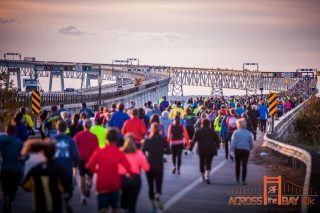
Almost all road races give runners a chance to do something that is otherwise difficult—running on traffic-free streets. But some races go a bit further, letting runners take advantage of bridges, roads, stadiums, racetracks and grounds that are typically off-limits the rest of the year. Here are 10 unique races with brag-worthy elements that are sure to produce a one-of-a-kind experience you won’t soon forget.
RELATED: 10 North American Marathons That Are Vacation-Worthy


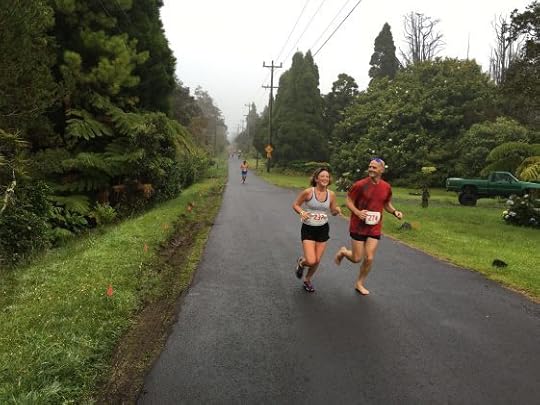
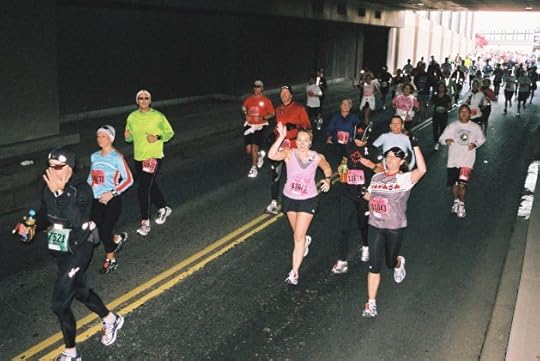



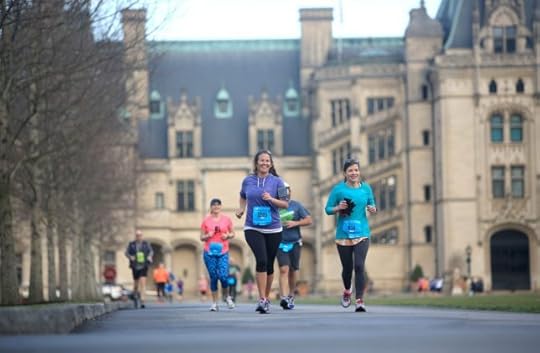


The post 10 Races With Unique Courses appeared first on Competitor.com.
Get Tough With These 5 Mental Race Strategies
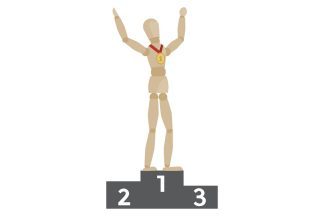
If you’ve ever done a race, it’s highly likely you’ve had some of the following thoughts:
“This is terrible. I’m terrible. Why do I even do this? Is it ever going to end? Everything hurts and I suck.”
Almost all athletes find themselves performing mental somersaults in the midst of hard racing. And, once we’re done, almost all of us think we could have gone harder if only we’d been mentally tougher.
While not every mental strategy works for every person, here are a few techniques to test out in your next race. “It’s good to have a toolbox to try different things,” says sports psychologist Dr. JoAnn Dahlkoetter, author of Your Performing Edge and a former triathlete and runner. One of these tools could get you to the finish faster.
1. Visualize before and during
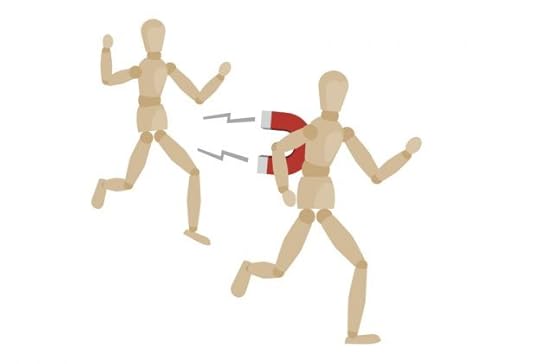
Visualization is an important technique before a race—especially if you actually visualize what could go wrong, “so you’re not necessarily surprised,” says Jeff Gaudette, head coach at RunnersConnect. If you prepare your brain for how painful the race will be, then your body is more prepared too.
In the race, you can still use visualization tricks too, like picturing the person ahead of you pulling you forward.
“Imagine there’s a magnet on their back and this magnet is pulling you toward them effortlessly,” Dahlkoetter says. She also likes to imagine the line of athletes as an energy train, pushing and pulling her along. When someone passes her, she visualizes attaching herself to their train and getting a “free ride to the finish line.”
RELATED: How to Train Yourself Mentally for Your Next Race
2. Reframe the bad things

The hard part is thinking of getting passed as a good thing. To do that, you need to reframe negatives as positives, according to Dahlkoetter.
Developing a reframing process takes practice in training, but a good place to start is instead of asking questions that start with “why,” ask questions like, “What’s good about this?” or “How can I use this?” For example, maybe the rain is miserable, but you know you deal with it better than other people.
“If you ask the question, your mind will come up with a good answer,” Dahlkoetter says. And use present tense: “I am getting faster every day,” not “I will get faster someday.”
RELATED: 4 Ways To Turn A Bad Race Into A Positive Experience
3. Be one with the pain

Positive self-talk is very powerful, according to Adrienne Taren, a University of Pittsburgh PhD student studying neurobiology and the effects of stress reduction on the brain. But studies suggest when you’re just using self-talk to hide or squash negative thoughts, the energy you’re spending trying to not think negative things actually causes you to perform worse.
Instead, there’s a good amount of evidence that mindfulness can have performance-enhancing benefits. That means internal and external awareness, and non-judgment—i.e. letting negative thoughts come and go.
Taren likes to tell herself, “I’m separate from this physical discomfort that is here with me and is going to be here with me for the next five minutes, and then it’ll go away.”
This takes practice.
4. Focus, focus, focus
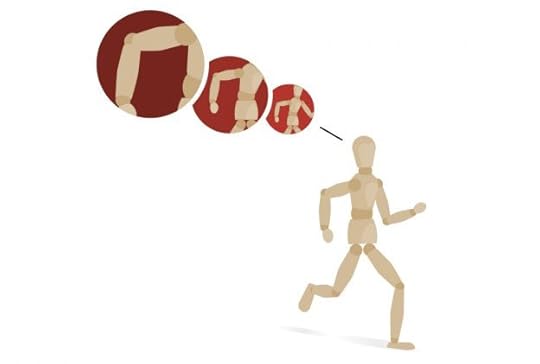
One way many athletes have found to be present in the moment and focused is to concentrate on specific aspects of technique or form, like maintaining a high cadence. Or, do a mindful body scan from head to toe. If your shoulders are tight, focus on clenching them up and then dropping them down.
“When you lose focus is when the effort backs off,” Gaudette says.
RELATED: Is Your Mental Game Keeping You From A Time Goal?
5. Disassociate (a little)
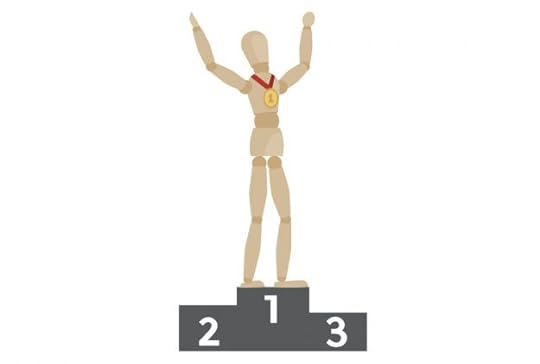
Of course, sometimes, a little lack of focus (while still running hard) can be a good thing. “It can be useful to also take a mental vacation,” Dahlkoetter says.
During the Ironman World Championships in Hawaii back in 1982, Dahlkoetter was struggling in the heat and starting to walk. Instead, she thought back to a time she felt powerful and strong, and started visualizing her previous win at the San Francisco Marathon. She imagined the feel of cool fog and running hard. By the time she focused back on the race she was actually in, she was moving up and went on to get second.
The post Get Tough With These 5 Mental Race Strategies appeared first on Competitor.com.
Behind The Trail Running Initiative Advocating To Protect Public Lands

Santa Cruz Island, Channel Islands National Park

Santa Cruz Island, Channel Islands National Park
In late January, Emily Peterson was on her usual trail run around the stunning Marin Headlands, near San Francisco, when she was gripped by fear. Here she was, enjoying public lands at a time when the fate of public lands was very much up in the air. Utah congressman Jason Chaffetz had recently proposed a bill transferring 3 million acres of public land to state ownership. The fear is that states, unable to afford managing this land, would look to sell it off to private landowners.
“I benefit so much from public lands on a daily basis, whether it’s running solo or with a friend having that camaraderie and sense of adventure,” Peterson says.

Flume Trail, Lake Tahoe, Calif.
Representative Chaffetz quickly killed his own bill after outcries from prominent hunter and angler associations—and that helped crystalize an idea that Peterson was kicking around. Trail runners use public land too, and people are more involved in politics now than anytime in recent memory. Why not mobilize runners to have a presence like other outdoor sportsmen?
“Why aren’t trail runners at the table?” Peterson asked herself and her friends. “I know that we don’t have the numbers and deep pockets that hunters might have. We’re not lobbyists in Washington, [D.C.], but I think it’s right for us to have a voice on these issues.”
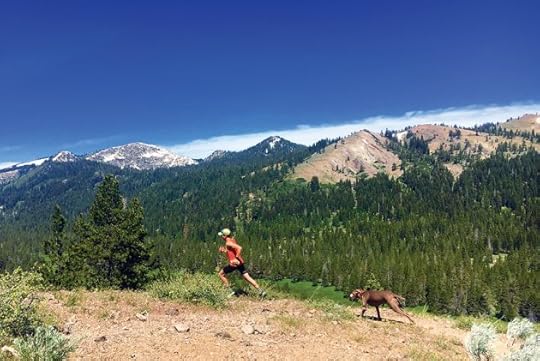
Levi Miller on Euer Valley trail, Northern Sierras, Calif.
Run Wild was soon born along with runners Claire Bernard, Levi Miller and Dylan Bowman, with the goal not only to build a coalition and stay aware of new bills in congress—but also to foster an appreciation for public lands. There’s a website, but the organization’s medium of choice is Instagram.
RELATED: 19 Challenging Yet Stunning Trail Races to Run in 2017
“We want to raise trail runners’ awareness about their dependence on public lands in the sport that we love to do,” Peterson says. “There’s an innate connection that we’re intrinsically aware of, but I don’t think that people always connect the two.”

Dylan Bowman on the Pacific Crest Trail, Calif.
Peterson, who by day is an environmental consultant in San Francisco, was wary of being seen as more clicktivism or slacktivism. The group is incorporating action alerts from The Wilderness Society so that when a bill is proposed, people will know to contact their elected officials. But there’s another thing Peterson is wary of.
“For me the most important aspect is that it’s also celebratory,” she says. “It’s important that we’re not depressing, because you’re not going to motivate people. We want to appreciate what’s already at our fingertips and inspire people to get engaged from there.”

Mount Ritter, Calif.
Down the road, the group aims to be active in corporate outreach, but wants to build momentum first by hosting public-lands “teach-ins” around the country, starting at local running clubs and stores.
“As we’ve seen with other causes, you can’t really have a presence on an issue politically if you aren’t already mobilized,” Peterson says. “You can’t be successful fighting a bill and gathering thousands of people overnight to express support for something. We’re slowly laying the groundwork, and if a big bill comes, we’ll have that community.”
Most importantly for now, then, is the message.

Claire Bernard on East Maroon Trail, Aspen, Colo.
“In a true sense of the word, these lands are public, which means that you own them. It’s a pretty fundamental concept, but might be revolutionary for some people. You have a piece of 640 million acres, and that’s something we should celebrate and hang onto. If it comes to these lands being auctioned off, we should put our foot down.”
RELATED: Trails for All—Opening Up Trail Races to Visually Impaired Runners
The post Behind The Trail Running Initiative Advocating To Protect Public Lands appeared first on Competitor.com.
7 Stylish Sunglasses Made With Performance In Mind

Some like the all-business look of “performance” sunglasses—the wraparound shades you find on all types of athletes, from elite runners to professional baseball players and golfers. Others don’t. For the latter, eyewear companies are making more choices than ever in styles that work just as well on the run as they do by the pool, on vacation or out to lunch. That’s because they’re loaded with performance features that allow you to endure sweaty runs in the sun.
RELATED: 2017 Running Gear Guide—Performance Sunglasses

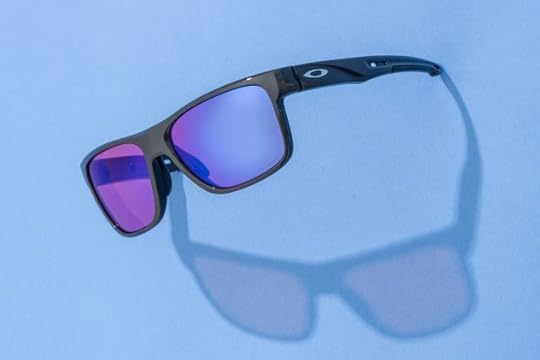
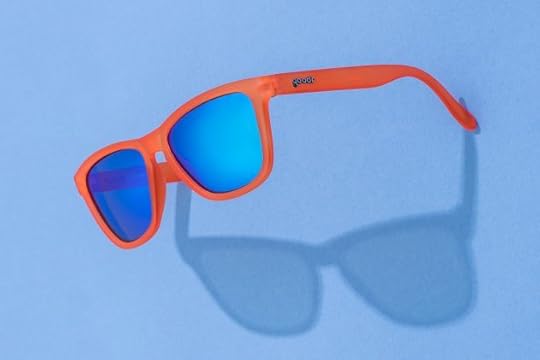




The post 7 Stylish Sunglasses Made With Performance In Mind appeared first on Competitor.com.
Ryan Hall's Blog
- Ryan Hall's profile
- 21 followers



